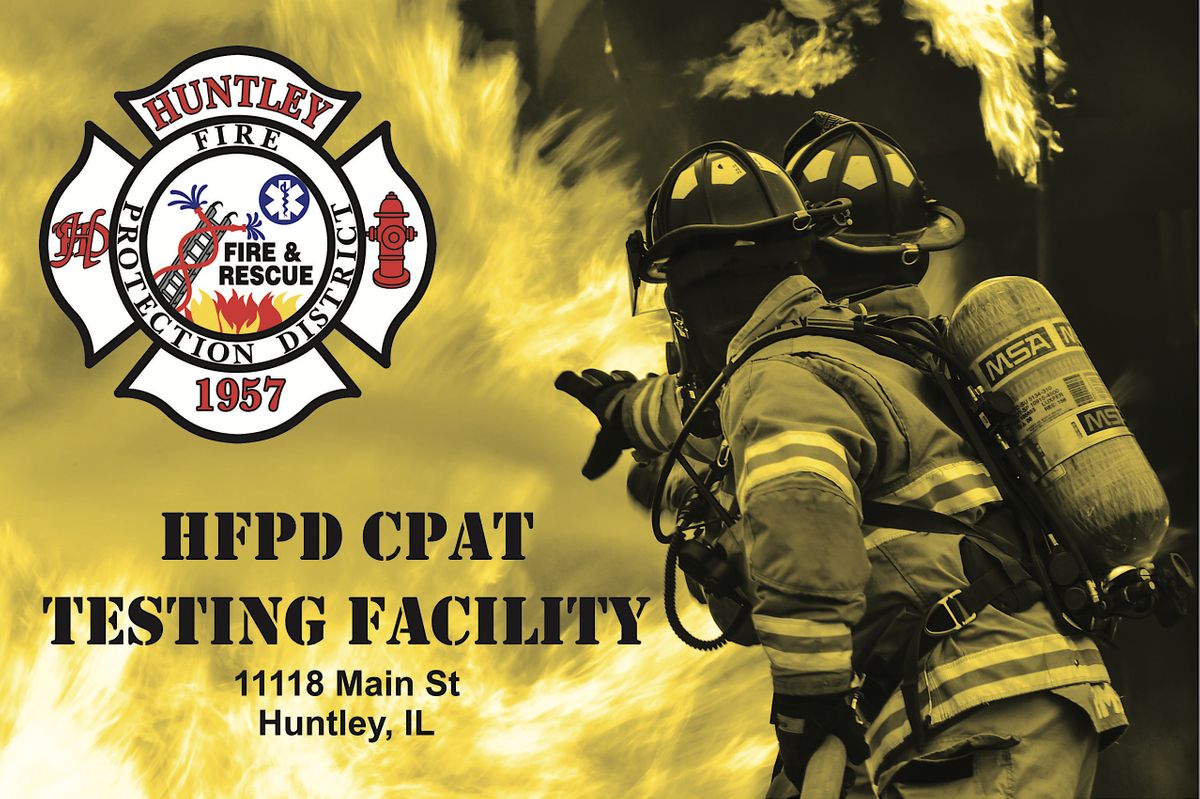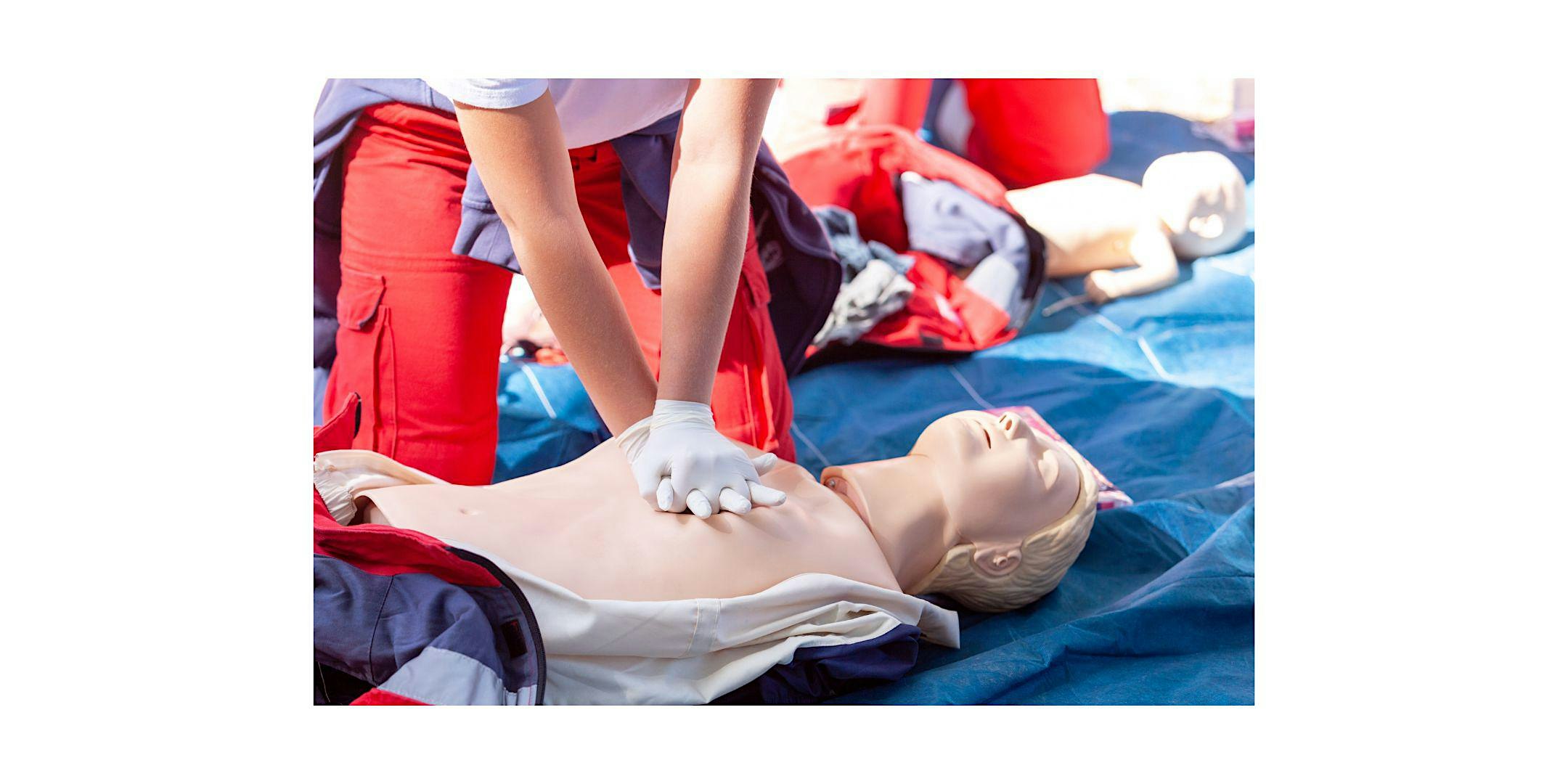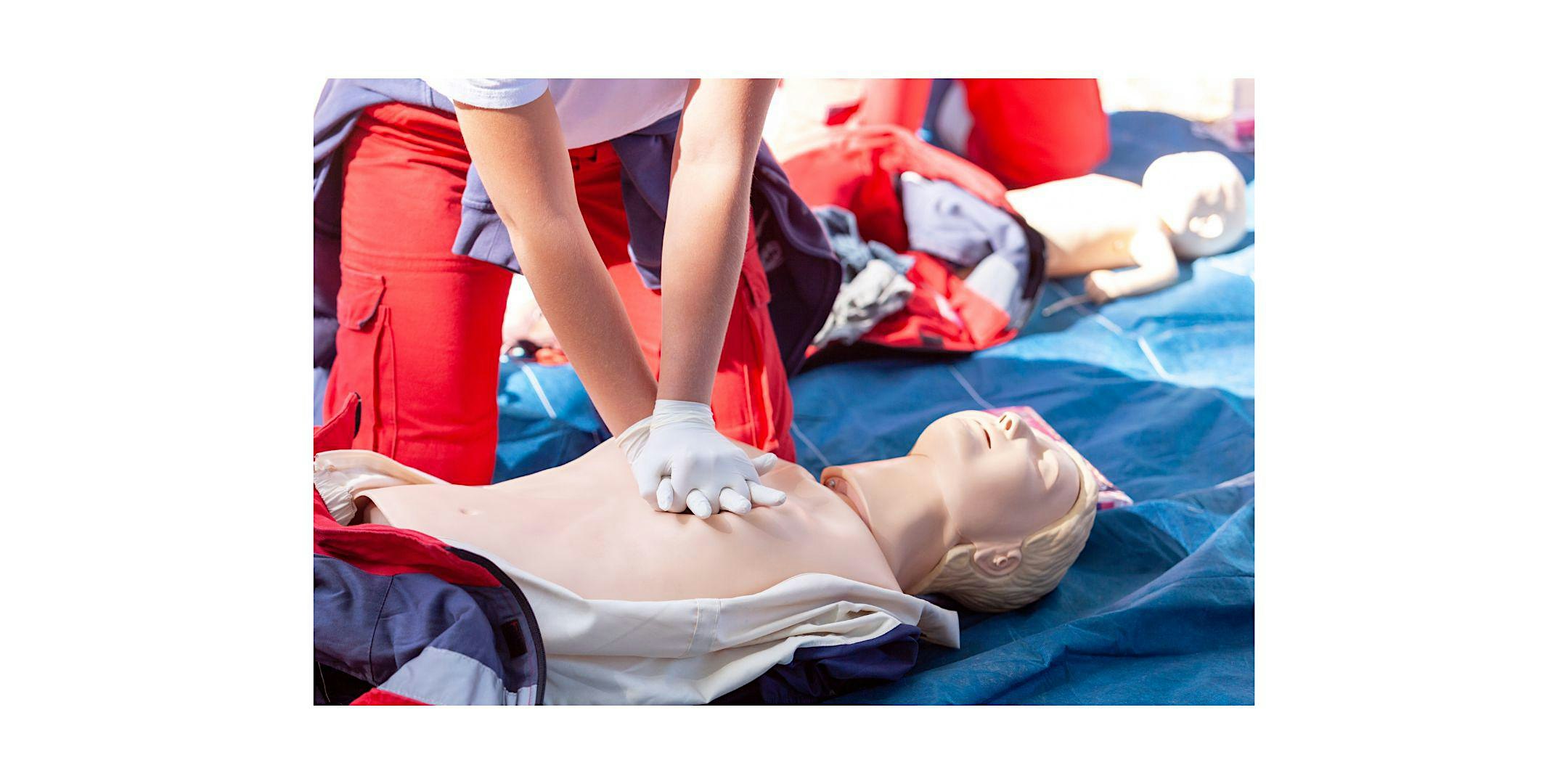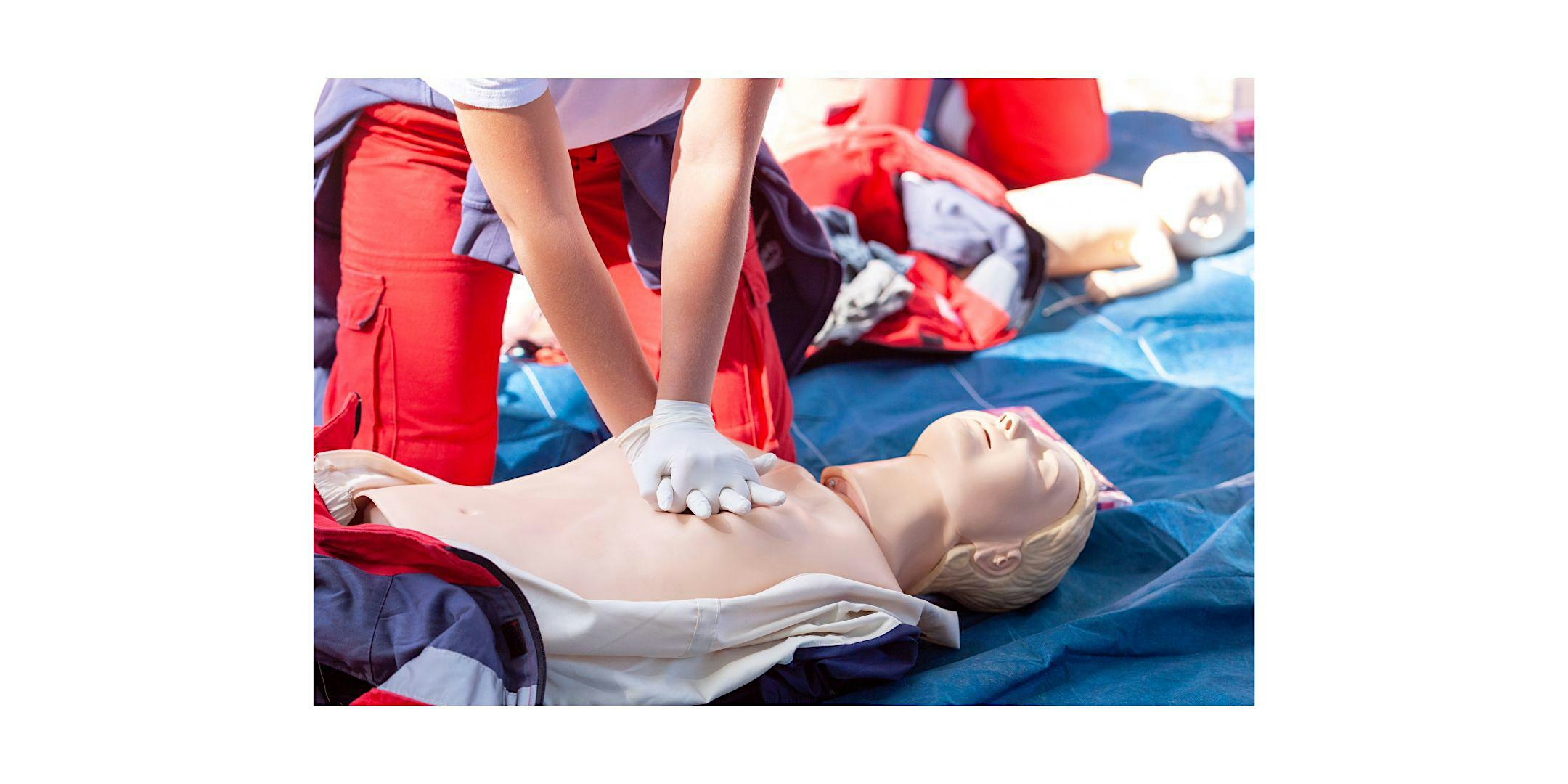"CPAT" Candidate Physical Ability Test
Schedule
Wed, 12 May, 2021 at 04:00 am to Sat, 20 Dec, 2025 at 12:00 pm
UTC-05:00Location
Huntley Fire Station 1 | Huntley, IL

About this Event
To Register: please select a CPAT Testing Date (Saturdays). Fill out all the required information and submit payment for the test. The day that you selected will be the date that you are SCHEDULED to challenge the test. You are entitled to two (2) orientation/practice sessions prior to your testing date. CPAT Testing tickets are labeled as “General Admission”. NO REFUNDS. See below
*Orientation/Practice days are pre-schedualed. Your orientation/practice runs will be on the TWO Wednesdays prior to your general admission test date. CPAT events are held on the FIRST full week and THIRD week of every month at 5pm.
*Example: You want to challenge the exam on April 6th, 2024. Your practice sessions would be on 3/20/24 and 4/3/24. *
*Practice Dates* See below July 9th & 23rd, August 4th & 20th, September 3rd & 17th, October 8th & 22nd, November 5th & 19th, December 3rd & 17th
Testing Information:
Watch the CPAT video below before coming to the Orientation & Practice or test day. You will see the video as part of the Orientation.
Must be at least 18 years of age at the time of first scheduled session.
You must provide a government-issued Driver’s License or State I.D. card.
If you choose 11 am for your time slot, you need to be in the building NO LATER than 11:30 or you will be considered LATE and not able to TEST.
Cancelation / Rescheduling: Tickets are nonrefundable once payment is recieved. You may reschedule within 48 hours of your test, however, we will only allow for up to two (2) reschedules per testing day. Email [email protected] with any of those requests, but strict adherence to the guidelines listed above will occur.
If you have any questions about CPAT, email: [email protected]
Testing Attire
Throughout all events, the candidate "You" must wear long pants and footwear with no open heel or toe. Watches and loose or restrictive jewelry are not permitted. We will provide a hard hat with chin strap and work gloves for the test.
ORIENTATION
As initially designed and developed, the CPAT provided for voluntary orientation sessions intended to familiarize candidates with the test apparatus and requirements. However, increased orientation and practice opportunities significantly improve the ability of all candidates to complete the CPAT within the “cut off” time of 10 minutes and 20 seconds. Therefore, it is now mandatory that all candidates must be given the opportunity to attend at least two (2) orientation sessions, with the first session taking place at least eight (8) weeks prior to the actual test date. During the sessions, candidates will receive “hands on” familiarity with the actual CPAT apparatus. Also during the orientation sessions, Certified Peer Fitness Trainers, fitness professionals, and/or CPAT-trained fire fighters (proctors)shall familiarize all candidates with each task and apparatus, and shall advise all candidates concerning specific conditioning regimens and techniques to help them prepare for the CPAT
Practice Sessions
Fire departments utilizing the CPAT shall also ensure that all candidates have full and equal opportunity to perform at least two (2) timed practice runs, using actual CPAT apparatus and completing the entire course. These mandatory practice sessions shall occur within thirty (30) days of the official test date. Again, Certified Peer Fitness Trainers, fitness professionals and/or CPAT-trained fire fighters (proctors) shall help the candidates understand the test elements and how they can improve their performance and conditioning.
In order to reduce the burden on a department’s resources, it is permissible for a candidate to pass the CPAT during either of the practice sessions, provided that the department has fully staffed and administered the test as they would on the official test day. However, a candidate who passes the CPAT during a practice session shall not be rank ordered ahead of any candidate who requires both practice sessions and the official test to pass the CPAT
Candidate Physical Ability Test Guide
This candidate physical ability test (CPAT) consists of eight separate events. The CPAT is a sequence of events requiring you to progress along a predetermined path from event to event in a continuous manner. This test was developed to allow fire departments to obtain pools of trainable candidates who are physically able to perform essential job tasks at fire scenes. This is a pass/fail test based on a validated maximum total time of 10 minutes and 20 seconds.
In these events, you wear a 50-pound (22.68-kg) vest to simulate the weight of self contained breathing apparatus (SCBA) and fire fighter protective clothing. An additional 25 pounds (11.34 kg), using two 12.5-pound (5.67-kg) weights that simulate a high-rise pack (hose bundle), is added to your shoulders for the stair climb event. Throughout all events, you must wear long pants, a hard hat with chin strap, work gloves and footwear with no open heel or toe. Watches and loose or restrictive jewelry are not permitted. All props were designed to obtain the necessary information regarding your physical ability. The tools and equipment were chosen to provide the highest level of consistency, safety and validity in measuring your physical abilities. A schematic drawing of the CPAT is included in this orientation material; however, the course layout may vary in order to conform to the fire department's test area. The events and distances between events are always the same. The events are placed in a sequence that best simulates fire scene events while allowing an 85-foot walk between events. To ensure the highest level of safety and to prevent exhaustion, no running is allowed between events. This walk allows you approximately 20 seconds to recover and regroup before each event. To ensure scoring accuracy by eliminating timer failure, two stopwatches are used to time the CPAT. One stopwatch is designated as the official test time stopwatch, the second is the backup stopwatch. If mechanical failure occurs, the time on the backup stopwatch is used. The stopwatches are set to the pass/fail time and count down from 10 minutes and 20 seconds. If time elapses prior to the completion of the test, the test is concluded and you fail the test.
Event 1 - Stair Climb
Equipment
This event uses a Step Mill stair climbing machine. The machine is positioned with one side up against a wall and an elevated proctor platform on the side opposite the wall. A single handrail on the wall side is available for you to grasp while mounting and dismounting the Step Mill. Additional steps are placed at the base of the Step Mill to assist you in mounting the Step Mill. Purpose of Evaluation This event is designed to simulate the critical tasks of climbing stairs in full protective clothing while carrying a high-rise pack (hose bundle) and climbing stairs in full protective clothing carrying fire fighter equipment. This event challenges your aerobic capacity, lower body muscular endurance and ability to balance. This event affects your aerobic energy system as well as the following muscle groups: quadriceps, hamstrings, glutes, calves, and lower back stabilizers.
Event
For this event, you must wear two 12.5-pound (5.67-kg) weights on your shoulders to simulate the weight of a high-rise pack. Prior to the initiation of the timed CPAT, there is a 20-second warm-up on the Step Mill at a set stepping rate of 50 steps per minute. During this warm-up period, you are permitted to dismount, grasp the rail or hold the wall to establish balance and cadence. If you fall or dismount the Step Mill during the 20-second warm-up period, you must remount the Step Mill and restart the entire 20-second warm-up period. You are allowed to restart the warm-up period twice. The timing of the test begins at the end of this warm-up period when the proctor who calls the word “START.” There is no break in time between the warm-up period and the actual timing of the test. For the test, you must walk on the Step Mill at a set stepping rate of 60 steps per minute for 3 minutes. This concludes the event. The two 12.5-pound (5.67-kg) weights are removed from your shoulders. Walk 85 feet (25.91 m) within the established walkway to the next event.
Failures
If you fall or dismount the Step Mill three times during the warm-up period, you fail the test. If you fall, grasp any of the test equipment or dismount the Step Mill after the timed CPAT begins, the test is concluded and you fail the test. During the test, you are permitted to touch the wall or handrail for balance only momentarily. However, if the wall or handrail is grasped or touched for an extended period of time, or if the wall or handrail is used for weight bearing, you are warned. Only two warnings are given. The third infraction constitutes a failure, the test time is concluded and you fail the test.
Event 2 - Hose Drag
Equipment
This event uses an uncharged fire hose with a hose line nozzle. The hose line is marked at 8 feet (2.24 m) past the coupling at the nozzle to indicate the maximum amount of hose you are permitted to drape across your shoulder or chest. The hose line is also marked at 50 feet (15.24 m) past the coupling at the nozzle to indicate the amount of hose line that you must pull into a marked boundary box before completing the test.
Purpose of Evaluation
This event is designed to simulate the critical tasks of dragging an uncharged hose line from the fire apparatus to the fire occupancy and pulling an uncharged hose line around obstacles while remaining stationary. This event challenges your aerobic capacity, lower body muscular strength and endurance, upper back muscular strength and endurance, grip strength and endurance, and anaerobic endurance. This event affects your aerobic and anaerobic energy systems as well as the following muscle groups: quadriceps, hamstrings, glutes, calves, lower back stabilizers, biceps, deltoids, upper back, and muscles of the forearm and hand (grip).
Event
For this event, you must grasp a hose line nozzle attached to 200 feet (60 m) of 1 3/4-inch (44-mm) hose. Place the hose line over your shoulder or across your chest, not exceeding the 8-foot (2.24-m) mark. You are permitted to run during the hose drag. Drag the hose 75 feet (22.86 m) to a pre-positioned drum, make a 90° turn around the drum, and continue an additional 25 feet (7.62 m). Stop within the marked 5 foot x 7 foot (1.52 m x 2.13 m) box, drop to at least one knee and pull the hose line until the hose line’s 50-foot (15.24-m) mark crosses the finish line. During the hose pull, you must keep at least one knee in contact with the ground and knee(s) must remain within the marked boundary lines. This concludes the event. Walk 85 feet (25.91 m) within the established walkway to the next event.
Failures
During the hose drag, if you fail to go around the drum or go outside of the marked path (cones), the test time is concluded and you fail the test. During the hose pull, you are warned if at least one knee is not kept in contact with the ground. The second infraction constitutes a failure, the test time is concluded and you fail the test. During hose pull, you are warned if your knees go outside the marked boundary line. The second infraction constitutes a failure, the test time is concluded and you fail the test.
Event 3 - Equipment Carry
Equipment
This event uses two saws and a tool cabinet replicating a storage cabinet on a fire truck.
Purpose of Evaluation
This event is designed to simulate the critical tasks of removing power tools from a fire apparatus, carrying them to the emergency scene and returning the equipment to the fire apparatus. This event challenges your aerobic capacity, upper body muscular strength and endurance, lower body muscular endurance, grip endurance, and balance. This event affects your aerobic energy system as well as the following muscle groups: biceps, deltoids, upper back, trapezius, muscles of the forearm and hand (grip), glutes, quadriceps, and hamstrings.
Event
For this event, you must remove the two saws from the tool cabinet, one at a time, and place them on the ground. Pick up both saws, one in each hand, and carry them while walking 75 feet (22.86 m) around the drum, then back to the starting point. You are permitted to place the saw(s) on the ground and adjust your grip. Upon return to the tool cabinet, place the saws on the ground, pick up each saw one at a time, and replace the saw in the designated space in the cabinet. This concludes the event. Walk 85 feet (25.91 m) within the established walkway to the next event.
Failures
If you drop either saw on the ground during the carry, the test time is concluded and you fail the test. You receive one warning for running. The second infraction constitutes a failure, the test time is concluded and you fail the test.
Event 4 - Ladder Raise and Extension
Equipment
This event uses two 24-foot (7.32-m) fire department ladders. For your safety, a retractable lanyard is attached to the ladder that you raise.
Purpose of Evaluation
This event is designed to simulate the critical tasks of placing a ground ladder at a fire structure and extending the ladder to the roof or window. This event challenges your aerobic capacity, upper body muscular strength, lower body muscular strength, balance, grip strength, and anaerobic endurance. This event affects your aerobic and anaerobic energy systems as well as the following muscle groups: biceps, deltoids, upper back, trapezius, muscles of the forearm and hand (grip), glutes, quadriceps, and hamstrings.
Event
For this event, you must walk to the top rung of the 24-foot (7.32-m) aluminum extension ladder, lift the unhinged end from the ground, and walk it up until it is stationary against the wall. This must be done in a hand over hand fashion, using each rung until the ladder is stationary against the wall. You must not use the ladder rails to raise the ladder. Immediately proceed to the pre-positioned and secured 24-foot (7.32-m) aluminum extension ladder, stand with both feet within the marked box of 36 inches x 36 inches (91.44 cm x 91.44 cm), and extend the fly section hand over hand until it hits the stop. Then, lower the fly section hand over hand in a controlled fashion to the starting position. This concludes the event. Walk 85 feet (25.91 m) within the established walkway to the next event.
Failures
If you miss any rung during the raise, one warning is given. The second infraction constitutes a failure, the test time is concluded and you fail the test. If you allow the ladder to fall to the ground or the safety lanyard is activated because you released your grip on the ladder, the test time is concluded and you fail the test. If during the ladder extension, your feet do not remain within marked boundary lines, one warning is given. The second infraction constitutes a failure, the test time is concluded and you fail the test. If you do not maintain control of the ladder in a hand over hand manner, or let the rope halyard slip in an uncontrolled manner, your test time is concluded and you fail the test.
Event 5 - Forcible Entry
Equipment
This event uses a mechanized device located 39 inches (1 m) off the ground that measures cumulative force and a 10-pound (4.54-kg) sledgehammer.
Purpose of Evaluation
This event is designed to simulate the critical tasks of using force to open a locked door or to breach a wall. This event challenges your aerobic capacity, upper body muscular strength and endurance, lower body muscular strength and endurance, balance, grip strength and endurance, and anaerobic endurance. This event affects your aerobic and anaerobic energy systems as well as the following muscle groups: quadriceps, glutes, triceps, upper back, trapezius, and muscles of the forearm and hand (grip).
Event
For this event, you must use a 10-pound (4.54-kg) sledgehammer to strike the measuring device in the target area until the buzzer is activated. During this event, you must keep your feet outside the toe-box at all times. After the buzzer is activated, place the sledgehammer on the ground. This concludes the event. Walk 85 feet (25.91 m) within the established walkway to the next event.
Failures
If you do not maintain control of the sledgehammer and release it from both hands while swinging, it constitutes a failure, the test time is concluded and you fail the test. If you step inside the toe-box, one warning is given. The second infraction constitutes a failure, the test time is concluded and you fail the test.
Event 6 - Search
Equipment
This event uses an enclosed search maze that has obstacles and narrowed spaces.
Purpose of Evaluation
This event is designed to simulate the critical task of searching for a fire victim with limited visibility in an unpredictable area. This event challenges your aerobic capacity, upper body muscular strength and endurance, agility, balance, anaerobic endurance, and kinesthetic awareness. This event affects your aerobic and anaerobic energy systems as well as the following muscle groups: muscles of the chest, shoulder, triceps, quadriceps, abdominals, and lower back.
Event
For this event, you must crawl through a tunnel maze that is approximately 3 feet (91.44 cm) high, 4 feet (121.92 cm) wide and 64 feet (19.51 m) in length with two 90° turns. At a number of locations in the tunnel, you must navigate around, over and under obstacles. In addition, at two locations, you must crawl through a narrowed space where the dimensions of the tunnel are reduced. Your movement is monitored through the maze. If for any reason, you choose to end the event, call out or rap sharply on the wall or ceiling and you will be assisted out of the maze. Upon exit from the maze, the event is concluded. Walk 85 feet (25.91 m) within the established walkway to the next event.
Failures
A request for assistance that requires the opening of the escape hatch or opening of the entrance/exit covers constitutes a failure, the test time is concluded and you fail the test.
Event 7 - Rescue
Equipment
This event uses a weighted mannequin equipped with a harness with shoulder handles.
Purpose of Evaluation
This event is designed to simulate the critical task of removing a victim or injured partner from a fire scene. This event challenges your aerobic capacity, upper and lower body muscular strength and endurance, grip strength and endurance, and anaerobic endurance. This event affects your aerobic and anaerobic energy systems as well as the following muscle groups: quadriceps, hamstrings, glutes, abdominals, torso rotators, lower back stabilizers, trapezius, deltoids, latissimus dorsi, biceps, and muscles of the forearm and hand (grip).
Event
For this event, you must grasp a 165-pound (74.84-kg) mannequin by the handle(s) on the shoulder(s) of the harness (either one or both handles are permitted), drag it 35 feet (10.67 m) to a pre-positioned drum, make a 180° turn around the drum, and continue an additional 35 feet (10.67 m) to the finish line. You are not permitted to grasp or rest on the drum. It is permissible for the mannequin to touch the drum. You are permitted to drop and release the mannequin and adjust your grip. The entire mannequin must be dragged until it crosses the marked finish line. This concludes the event. Walk 85 feet (25.91 m) within the established walkway to the next event.
Failures
If you grasp or rest on the drum at any time, one warning is given. The second infraction constitutes a failure, the test time is concluded and you fail the test.
Event 8 - Ceiling Breach and Pull
Equipment
This event uses a mechanized device that measures overhead push and pull forces and a pike pole. The pike pole is a commonly used piece of equipment that consists of a 6-foot long pole with a hook and point attached to one end.
Purpose of Evaluation
This event is designed to simulate the critical task of breaching and pulling down a ceiling to check for fire extension. This event challenges your aerobic capacity, upper and lower body muscular strength and endurance, grip strength and endurance, and anaerobic endurance. This event affects your aerobic and anaerobic energy systems as well as the following muscle groups: quadriceps, hamstrings, glutes, abdominals, torso rotators, lower back stabilizers, deltoids, trapezius, triceps, biceps, and muscles of the forearm and hand (grip).
Event
For this event, you must remove the pike pole from the bracket, stand within the boundary established by the equipment frame, and place the tip of the pole on the painted area of the hinged door in the ceiling. Fully push up the 60-pound hinged door in the ceiling with the pike pole three times. Then, hook the pike pole to the 80-pound ceiling device and pull the pole down five times. Each set consists of three pushes and five pulls. Repeat the set four times. You are permitted to stop and, if needed, adjust your grip. Releasing your grip or allowing the pike pole handle to slip, without the pike pole falling to the ground, does not result in a warning or constitute a failure. You are permitted to re-establish your grip and resume the event. If you do not successfully complete a repetition, the proctor calls out “MISS” and you must push or pull the apparatus again to complete the repetition. This event and the total test time ends when you complete the final pull stroke repetition as indicated by a proctor who calls out “TIME.”
Failures
One warning is given if you drop the pike pole to the ground. If you drop the pike pole, you must pick it up without proctor assistance and resume the event. The second infraction constitutes a failure, the test time is concluded and you fail the test. If your feet do not remain within the marked boundary lines, one warning is given. The second infraction constitutes a failure, the test time is concluded and you fail the test.
Ladder Climb Test
The Ladder Climb test isn't a requirement of "CPAT" it's an IL State Act
On August 4, 2011, the State of Illinois enacted Public Act 097-0251, which mandates new firefighter candidate physical ability test requirements. Candidates are now obligated to participate in a ladder climb exercise and demonstrate an ability to operate from heights.
Where is it happening?
Huntley Fire Station 1, 11118 Main Street, Huntley, United StatesEvent Location & Nearby Stays:
USD 150.00









